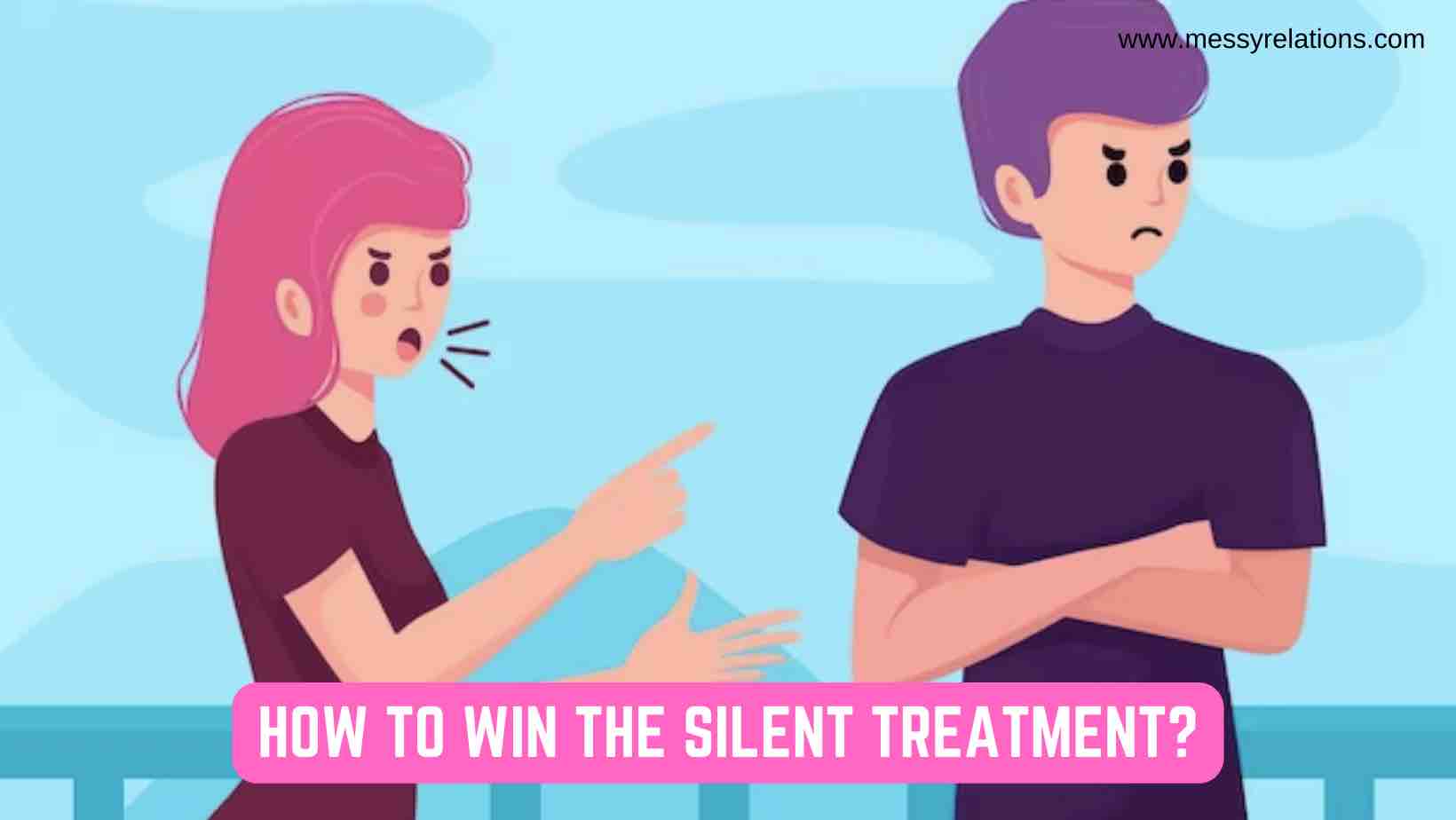The silent treatment can feel like an invisible war. Words become soldiers in retreat, and the battlefield, often a relationship, becomes eerily quiet. But ‘winning’ isn’t about defeating the other person; it’s about overcoming the communication gap that the silence has created. If you’re curious about how to win silent treatment, it’s essential to understand that victory is found in re-establishing dialogue and understanding, not just breaking the silence.
1. Recognize the Silence for What It Is
The first step to ‘winning’ the silent treatment is to recognize it for what it truly is: a form of communication. It’s a message, albeit a non-verbal one, that indicates something is amiss. Accepting this can change the way you approach the situation, transforming it from a challenge to a puzzle that requires solving.
2. Reflect on the Possible Causes
Before diving into action, reflect on what might have led to this silence. Was there a disagreement, an action, or even a lack of action that might have triggered it? Understanding the cause is like reading the rules before playing the game; it gives you the insight needed to move forward effectively.
3. Stay Calm and Patient
Reacting with frustration or anger can be tempting, but it only entrenches the silence deeper. Approach the situation with calmness and patience, as if you’re a diplomat seeking to negotiate peace. This stance can disarm tension and show that you’re coming from a place of wanting to understand rather than confront.
4. Extend an Olive Branch
Reach out to the person giving the silent treatment. This doesn’t mean bombarding them with demands to talk, but rather offering an opportunity for dialogue when they’re ready. Sometimes, a simple note or gesture that conveys your willingness to listen and talk can be the key that unlocks the silence.
5. Use ‘I’ Statements to Express Yourself
When the time comes to talk, focus on using ‘I’ statements, such as “I feel hurt when we don’t talk about what’s bothering us.” This type of language is less likely to put the other person on the defensive and can facilitate a more open exchange of feelings and perspectives.
6. Practice Active Listening
If your partner begins to share, practice active listening. This means truly hearing what they’re saying without planning your rebuttal or defense. Reflect back what you’ve heard to show you understand, and avoid interruptions. In the ‘game’ of silent treatment, active listening is the equivalent of a fair and attentive referee.
7. Address the Issue, Not Just the Silence
Aiming to break the silence without addressing the underlying issue is like winning a battle but losing the war. Discuss the root cause of the silence openly and work towards a resolution. This requires honesty and may also require compromise from both parties.
8. Set Boundaries and Expectations for the Future
Once you’ve navigated through the silence, set boundaries and expectations to prevent future occurrences. This might involve establishing better communication practices or agreeing to use different strategies when feeling upset or hurt.
9. Know When to Seek Help
Sometimes the silent treatment can be symptomatic of deeper issues within a relationship that may need professional attention. If you find the silent treatment is a recurring pattern that you can’t resolve, seeking the help of a counselor can provide guidance and facilitate healthier communication strategies.
10. Take Care of Yourself
It’s important to remember self-care during times of conflict. Engaging in your own interests and maintaining your emotional health is crucial. It ensures that you’re in a good place mentally and emotionally to handle the challenges that the silent treatment brings.
In the quiet struggle of how to win silent treatment, the true ‘win’ is restoring healthy communication and strengthening the relationship. It’s less about triumph and more about mutual understanding and respect. Like any conflict, there are no real winners in the silent treatment, only survivors who emerge hopefully wiser, more understanding, and better equipped for the complexities of human relationships.
Remember, winning the silent treatment doesn’t mean outlasting the other person in a stubborn silence. It means bridging the gap, re-establishing communication, and addressing the issues that led to the silence in the first place. So, in this quiet battle, let empathy, patience, and understanding be your allies.
FAQs on How to Win the Silent Treatment?
1. What are the first steps to take when someone gives you the silent treatment?
The initial approach should involve recognizing the silence as a form of non-verbal communication and reflecting on any potential triggers that led to this point. Maintaining calmness and patience is crucial during this period, as it sets a constructive foundation for eventual dialogue.
2. How can I encourage my partner to end the silent treatment and start talking again?
You can encourage your partner by extending an olive branch, indicating your willingness to listen and engage in an open dialogue. Small gestures that show empathy and readiness to understand can often motivate the other person to break the silence.
3. What is the most effective way to communicate during a silent treatment standoff?
Using ‘I’ statements to express how the silent treatment affects you can be an effective way to communicate, as it avoids blame and focuses on your feelings. This method can help create a safe space for both parties to begin a constructive conversation.
4. How can active listening help in resolving the silent treatment in a relationship?
Active listening demonstrates to the silent party that their feelings and perspectives are valid and important. By truly hearing and understanding their viewpoint, it can create a level of trust and openness that encourages resolution and healing.
5. Is it possible to address the silent treatment without discussing the underlying issue?
While you may be able to break the silence temporarily without addressing the underlying issue, lasting resolution typically requires confronting and working through the root cause of the conflict to prevent recurrence.
6. What are some signs that professional help might be needed to deal with the silent treatment in a relationship?
If the silent treatment becomes a recurring pattern that you struggle to resolve or if it starts to significantly impact your emotional well-being and the health of the relationship, these are signs that professional help, such as counseling, might be beneficial.
7. How important is self-care when dealing with the silent treatment?
Self-care is vital, as it ensures that you remain emotionally and mentally resilient. Taking care of yourself allows you to approach the situation with a clear mind and a balanced perspective, essential elements in effectively addressing the silent treatment.




